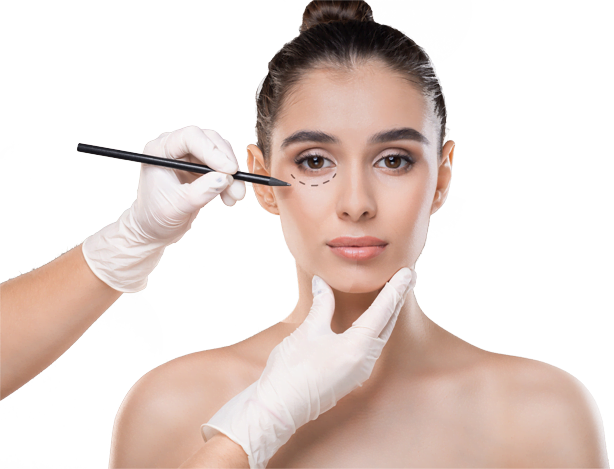If you are a transgender woman who wants to align your body with your gender identity, you might be interested in transgender body feminization procedures. These are a set of surgical and non-surgical treatments that can help you achieve a more feminine and curvy appearance, and boost your confidence and self-esteem. In this blog post, we will explain what transgender body feminization procedures are, what they involve, and what you can expect from them.

Table of Contents
What are Transgender Body Feminization Procedures?
Transgender body feminization procedures are a group of cosmetic and reconstructive procedures that aim to modify the features of the body that are typically associated with masculinity, such as the chest, waist, hips, buttocks, thighs, arms, legs, and face. These procedures can help transgender women create a more harmonious and balanced body shape, and enhance their feminine beauty and attractiveness.
Some of the most common transgender body feminization procedures are:
- Breast augmentation: This procedure involves inserting implants or fat grafts into the breasts to increase their size, shape, and projection. This can create a more voluptuous and natural-looking bust, and improve the proportion of the upper body.
- Liposuction: This procedure involves removing excess fat from specific areas of the body, such as the abdomen, flanks, back, arms, or thighs. This can create a more slender and contoured silhouette, and reduce the appearance of unwanted bulges or rolls.
- Brazilian butt lift: This procedure involves transferring fat from other parts of the body to the buttocks to enhance their volume, shape, and lift. This can create a more round and perky rear end, and improve the curve of the lower body.
- Thighplasty: This procedure involves removing excess skin and fat from the thighs to tighten and smooth them. This can create a more toned and firm appearance of the legs, and reduce the sagging or drooping of the skin.
- Facial feminization surgery: This procedure involves modifying the features of the face that are typically associated with masculinity, such as the forehead, brow, nose, chin, jawline, cheekbones, lips, or Adam’s apple. This can create a more delicate and refined facial appearance, and enhance the femininity and attractiveness of the face.
Transgender Body Feminization Procedures: Pros and Cons
Transgender body feminization procedures have their pros and cons, depending on your personal goals and expectations. Here are some of the main advantages and disadvantages of these procedures:
Pros
- They can help you achieve a more feminine and curvy body shape that matches your gender identity and expression.
- They can boost your confidence and self-esteem by improving your body image and self-perception.
- They can enhance your quality of life by reducing your gender dysphoria and increasing your social acceptance and integration.
- They can be customized to suit your individual needs and preferences, as you can choose which areas of your body you want to modify and how.
Cons
- They can be costly and time-consuming, as they may require multiple sessions or stages to achieve the desired results.
- They can carry some risks and complications, such as infection, bleeding, scarring, asymmetry, implant rupture or displacement, fat necrosis or embolism, nerve damage, or dissatisfaction with the results.
- They can require a significant recovery time and aftercare, as you may need to wear compression garments, take medications, avoid strenuous activities, or follow a specific diet for several weeks or months after the procedures.
- They may not be enough to fully satisfy your gender transition goals, as you may also need hormonal therapy or genital surgery to complete your physical transformation.

Conclusion
Transgender body feminization procedures are a set of surgical and non-surgical treatments that can help transgender women achieve a more feminine and curvy appearance. These procedures can modify the features of the body that are typically associated with masculinity, such as the chest, waist, hips, buttocks, thighs, arms, legs, and face. These procedures have their pros and cons depending on your personal goals and expectations. The best way to decide if these procedures are right for you is to consult with a professional surgeon who can assess your physical condition and recommend the best options for you.
FAQ
Q: How do I find a qualified surgeon for transgender body feminization procedures?
A: Finding a qualified surgeon for transgender body feminization procedures is very important to ensure your safety and satisfaction. You should look for a surgeon who has extensive experience in performing these procedures for transgender patients. You should also check their credentials, certifications, portfolio of before-and-after photos, testimonials, and reviews. You should also schedule a consultation with them to discuss your goals, expectations, and concerns, and to evaluate their rapport, communication, and professionalism.
Q: How much do transgender body feminization procedures cost?
A: The cost of transgender body feminization procedures varies depending on several factors, such as the surgeon’s fees, location, facility fees, anesthesia fees, medication fees, and other expenses. According to some estimates, the average cost of these procedures may range from $5,000 to $50,000 or more. However, these are only approximate figures, and the actual cost may differ depending on your individual case.
Q: How long do the results of transgender body feminization procedures last?
A: The results of transgender body feminization procedures may last for several years or even a lifetime, depending on the type of procedure, the quality of the implants or fat grafts, and your lifestyle habits. However, you should keep in mind that these procedures do not stop the natural aging process, and that your body may change over time due to hormonal fluctuations, weight gain or loss, pregnancy, or other factors. Therefore, you may need to undergo touch-up or revision procedures in the future to maintain or improve your results.

